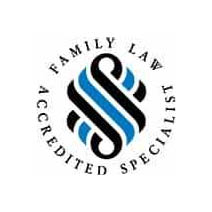What is conveyancing? What does a conveyancer do and why do you need one?
This article is for everyone out there who hasn’t bought property before, or who hasn’t bought for a long time. It’s the essential background you need to understand the process.
What is conveyancing?
At the most basic level, conveyancing is the transfer of property from one entity to another. Property here means land, a house, a commercial space, a block or units, a warehouse or so on.
The transfer may be from person to person, from person to company, from company to company or so on. The work is done by a conveyancer – a qualified legal professional who specialises in property law.
What’s the difference between a conveyancer and a solicitor?
Conveyancers do not require a full law degree. Instead, they have a Diploma or an Advanced Diploma of Conveyancing. The course only includes the areas of law relevant to conveyancing. This includes modules on contract law, tax law, trust law and so on.
Qualifications are state-based, because the relevant law is state-based. In NSW, that’s the Conveyancing Act 1919. Conveyancers can only practise in a state where they are qualified. Our conveyancer Judy studied at Macquarie University and practises in NSW.
Do I have to use a conveyancer or can I do it myself?
If you know and understand property, and if you are prepared to do a lot of legwork, you can do your own conveyancing.
But we don’t recommend that unless you are a paralegal with experience in property law, or a solicitor, or something similar. If you are outside the industry, doing everything yourself is fraught with danger. You don’t know the law, or what you’re stepping into.
So what does a conveyancer do?
The buyer and the seller each have their own conveyancer. The work is basically the same, except at the very start. For the seller, the conveyancer starts by preparing the contract. When acting for a buyer, the first step is to review the seller’s contract.
What a conveyancer does for the buyer – Contract Review
Contract Review
The first thing we do as your conveyancer is to provide you with advice about the contract.
We read the entire contract, then flag anything we think you should know and discuss it with you. We have an 8 page contract review, which covers things like
- Penalties if you don’t meet a due date.
- Easements on the title. These are rights other people have to access or use the property even when they don’t own it. (For example, right of way, or right to utility supply.)
- Specific issues for foreign buyers
Once we’re reviewed the contract, we meet with you to go over the key points. This can be by Zoom, by telephone or in person.
Please note that we may flag something which isn’t a big concern to you. Every client has their own priorities. It’s always better to check than to assume you’re OK with a particular provision.
Once you’re happy with the contract, we guide you through the rest of the process.
What a conveyancer does for the seller – Contract preparation
If you’re selling property, the first thing a conveyancer does for you is to prepare a contract.
We collect information from you to put in the contract – length of settlement and so on. We also liaise with Council. We ensure the details in the contract are a correct and accurate reflection of the property and your instructions. That includes things like
- Planning certificates
- Whether there is a pool
- Easements
- Arrears on land tax or other obligations.
Councils respond at different speeds.
Hills Shire Council usually takes 24 hours. Hornsby and Blacktown take 2 days. Parramatta is about a week and the Hawkesbury Council can take two weeks. While we can prepare contracts across New South Wales (and have worked as far away as Parkes), those are the councils we work with most often.
What a conveyancer does for both buyer and seller
Contract negotiation
It’s very common to negotiate changes to the contract.
As we go through the review meeting with you, we prepare a letter to the other side with requests for changes. You review that and confirm it is correct before we email the letter. When they reply, we touch base again to confirm the new terms are OK.
This happens as part of the pre-exchange or during the cooling off period.
The settlement process
After cooling off, we advise you that it’s time to pay the deposit and we go through the settlement process.
It’s our job to make sure the sale meets all milestones so you can complete on time. We check progress in advance of due dates. We check whether documents have been provided or completed.
Before the settlement date, we prepare and check settlement figures, then send them to you. (Settlement figures are adjustments for costs like council rates, water and so on. Whether you’re the purchaser and the vendor, you should only pay your share.)
Working with your broker or bank
You and the vendor are not the only parties involved in settlement. There are also banks, brokers, inspectors and Council.
Imagine it as a sprint. Everyone’s running for the same finish line, but they’re all in their own lanes. And if one person falls, the race doesn’t finish. Settlement doesn’t happen. As your conveyancer, our job is to make sure no one falls down.
We work closely with your bank or broker as well, to make sure they meet their milestones. We take a proactive approach, so we know before something goes wrong.
Maybe loan documents haven’t been sent yet. Or perhaps your broker asked you for something three days ago, but you’ve been too busy to address it. We flag it and get things moving so there’s no delay to settlement.
The biggest challenge is usually the banks. If your bank’s not ready, that still your fault. The bank is out of our control, but we can nudge them sometimes. We monitor closely, and if nothing’s happening, we call them. We explain how this makes it bad for everyone, so we can get things moving again.
Minimising stress
We try to avoid stress for you as our client. We can communicate directly with your bank and broker to take the stress off you. Alternatively, if you want to get involved, we can tell you everything and just provide direction when you need it.
It all depends on you and how you want to approach the sale.
So that’s an overview of the conveyancing process, from start to finish.
One final comment – if you’re selling one property and buying another, it’s generally easier to use the same conveyancer for both transactions. It gives you one person to communicate with. Also, if terms change on one contract, the conveyancer is aware of the impact on the other transaction.
Whether you’re a buyer, a seller or both, we’d love to help you settle your property transaction with the least possible stress. Get in touch to find out more.






